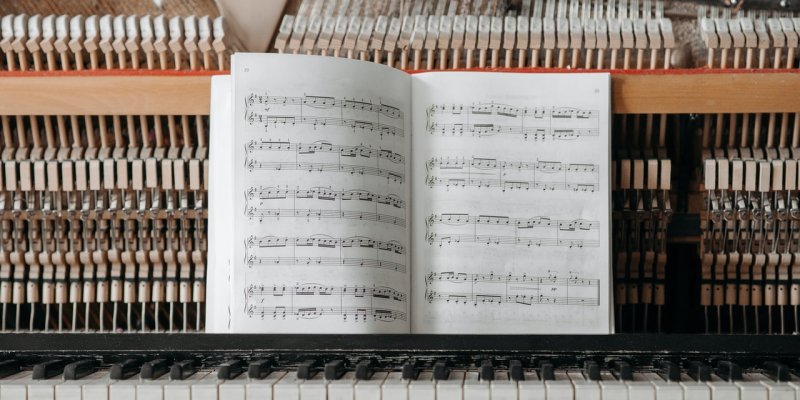
A meter in music, also spelled as "metre", is how we identify the pulse or the count and the steady beat in a song. Songs usually have a pulse in each measure that is grouped by pulses of 2, 3, or 4 (or duple, triple, and quadruple).
In Western Music styles, meters are usually grouped into two different types: simple time and compound time. In very rare instances, a song can be made in irregular time and not follow the normal rules.
Related Post: What Is Steady Beat?
Time signatures specify how many beats or pulses are in a measure (also known as a bar) on the top (or 1st) number and which note value is equivalent to a beat with the second or bottom number.
Time signatures are grouped into different meter classifications based on the pulse of a song.
For example, the most common time signature is the "4/4" time signature in Western music, with there being four beats in each measure, and the quarter note is the beat. This time signature falls into the category of a simple time meter.
Learning time signatures, meters, and the value of different note types can be tricky at first. It's where music theory dives pretty far into the math side of things. Here's a simple way to explain the basics.
A quarter note is played for one-quarter of a whole note. It's the most common pulse value in songs since most songs are in 4/4 time signature.
A half note is played or sung for half of a full whole note and is counted as two beats.
A whole note is counted as four beats, which is a full measure's worth of counting if you're in the most common time signature, 4/4.
Hearing the difference between 3/4 in simple time and 6/8 in compound time can be quite a challenge.
Here's a great video to demonstrate with audio and video to help you get a feel for the change between a pulse that can be divided into two and a pulse that can be divided into three.
Simple time is the first type of meter that is most widely used in Western music culture. Simple meters include the following subtypes: Simple duple, simple triple, and simple quadruple.
Simple duple, quadruple, and triple just refer to the number of beats in a measure. So 4/4 time is simple quadruple meter, 3/4 time signature is simple triple, and 2/4 is simple duple.
It is important to note that simple time signatures can always be divided into groups of two. The term simple comes from the fact that each pulse or note can be divided into two.
Compound time is when time signatures get even more tricky, but in a fun way! Time signatures in compound time will have an 8 at the bottom instead of a 4. This is because the beat is counted with the 8th note instead of the quarter note.
Compound time meters always group the pulse into divisions of 3 instead of 2. For example, 6/8 time is the most common time signature in compound time.
In each measure for the time signature of 6/8, there are six beats, and each eighth note counts as a beat.
Related Post: 6 Essential Music Theory Basics Every Musician Should Know
Understanding meter in music is essential for musicians and music enthusiasts alike. It allows us to identify the pulse and steady beat in a song, giving it structure and rhythm.
By learning about time signatures and meters, you can decipher the underlying patterns and feel of different musical compositions.
To determine the meter of a song, familiarize yourself with time signatures and the value of different note types. Start with the most common time signature, 4/4, where the quarter note serves as the beat.
From there, you can explore other time signatures and their corresponding meters.
To better grasp the concept of meters in music, listen to examples and watch videos that demonstrate the differences between various time signatures. Practice counting and feeling the pulse in different meters to develop your musical intuition.
By understanding and appreciating meter in music, you'll deepen your musical knowledge and enhance your ability to interpret and perform songs with precision and musicality.
Embrace the math side of music theory and enjoy exploring the rhythmic world of meters!
Related Post: 5 Ways To Tell What Key A Song Is In

As a session singer, writer, and producer that has worked with over 300 clients to provide high-quality jingles, singles, and features, Yona spends her time creating and marketing new music and helpful resources for creators. Check out Yona’s latest releases on her Spotify, her Youtube and share if you like it!
If you are in need of singer, songwriter or song producer services, see what Yona Marie can offer you on her services page.